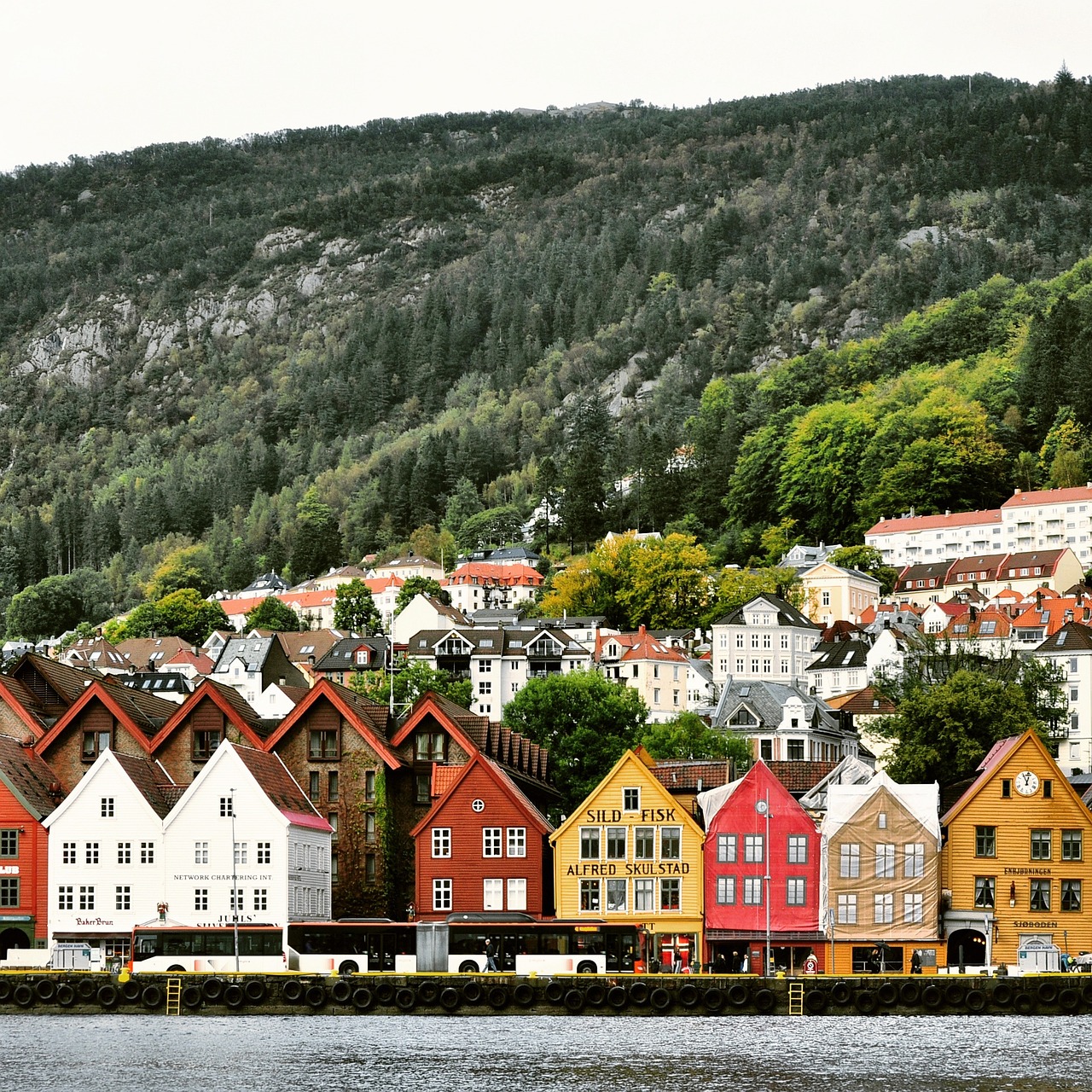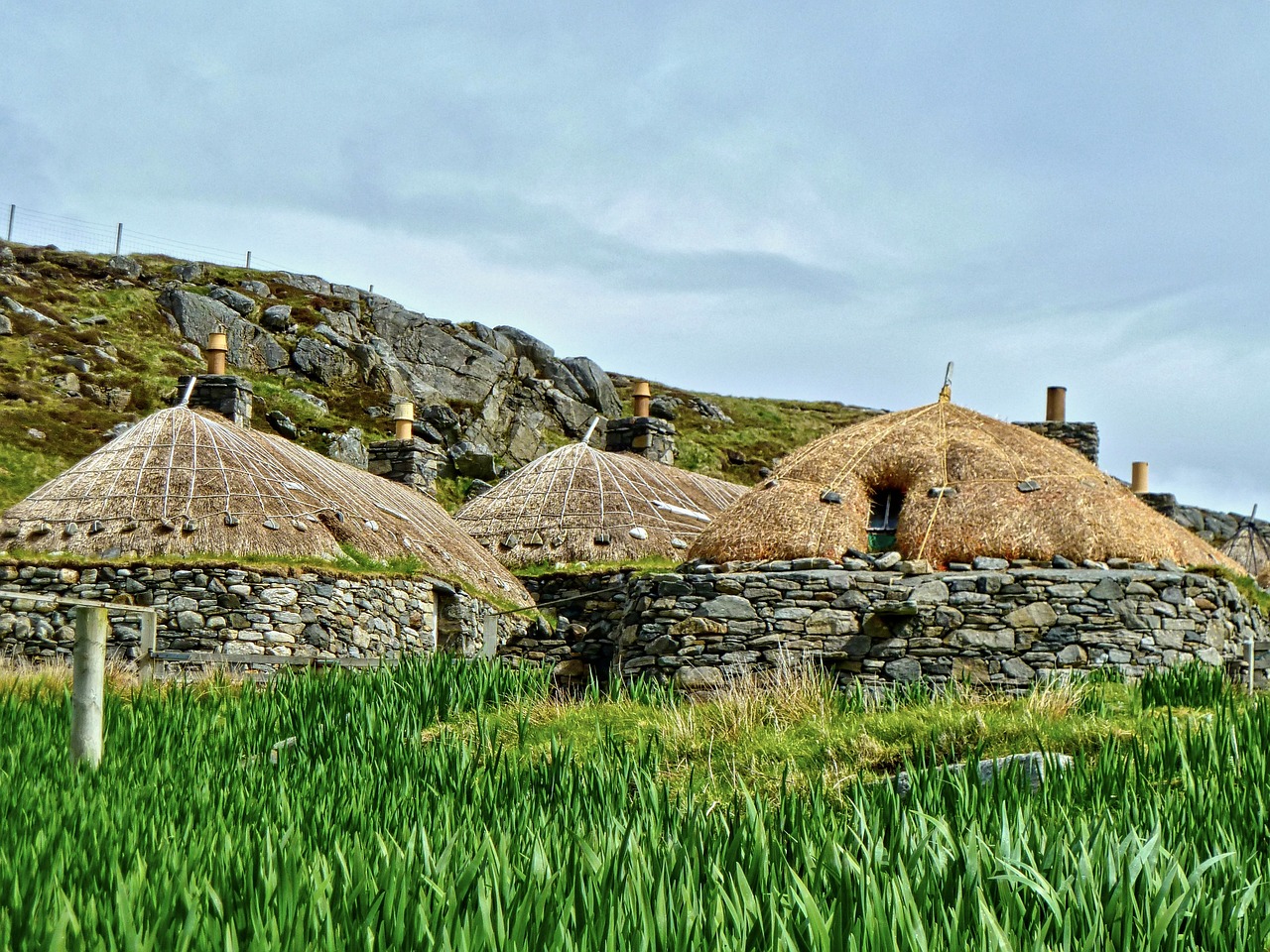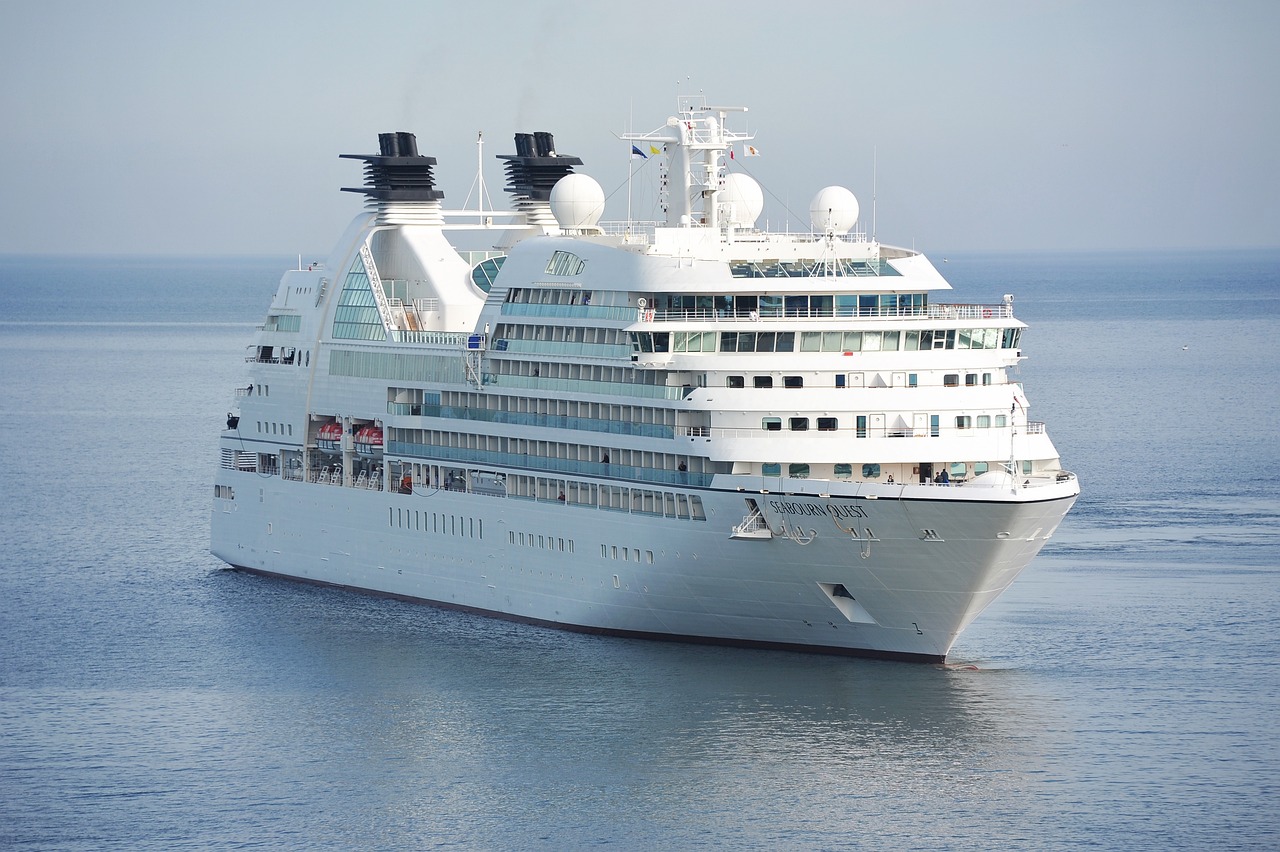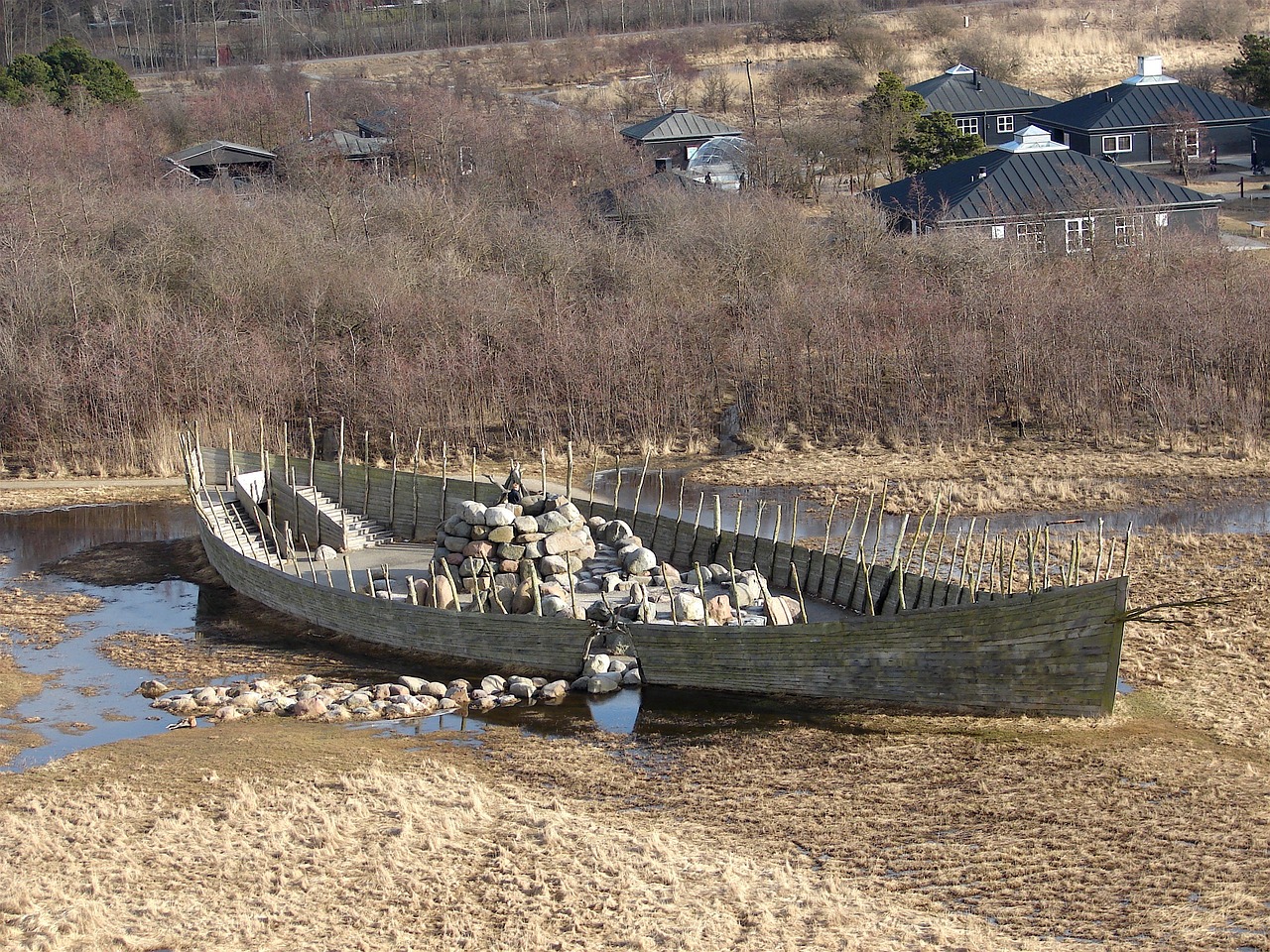Myth vs. Reality - The Viking Age
When delving into the intriguing world of the Viking Age, it's essential to distinguish between the myths that have been perpetuated over time and the historical realities that underpin this fascinating era. Separating fact from fiction is crucial in gaining a deeper understanding of the true nature of Viking civilization and the legacy they have left behind.

Origins of the Vikings
The origins of the Vikings have long been shrouded in mystery and misconceptions, perpetuated by popular culture and historical inaccuracies. Contrary to common belief, the Vikings were not a homogeneous group of people with a singular origin. Instead, they were comprised of various tribes and clans from the Scandinavian region, including present-day Norway, Sweden, and Denmark. These seafaring warriors emerged from a complex tapestry of cultures, blending influences from Germanic, Nordic, and Slavic traditions.
One of the prevailing myths surrounding the Vikings is the notion of a barbaric and uncivilized society. In reality, the Vikings were skilled craftsmen, traders, and farmers who established thriving communities across their homelands. They were adept at navigating both the seas and intricate social structures, with a strong emphasis on familial ties and honor codes.
Furthermore, the Viking Age did not have a clear-cut beginning or end, but rather evolved over centuries of interaction and conflict with neighboring peoples. The expansion of the Vikings was not driven solely by a thirst for conquest, but also by factors such as population growth, economic opportunities, and political upheaval.
To truly understand the origins of the Vikings, one must look beyond the stereotypical depictions of horned helmets and pillaging raids. By delving into the rich tapestry of Scandinavian history and archaeology, we can uncover the nuanced and multifaceted origins of these enigmatic seafarers.

Viking Society and Culture
Viking society and culture have long been shrouded in mystery and misconception, often depicted as barbaric and uncivilized. However, the reality of Viking civilization reveals a complex and sophisticated society with rich traditions and customs. Contrary to popular belief, the Vikings were not just ruthless warriors but also skilled craftsmen, traders, and farmers who valued honor, loyalty, and community.
At the heart of Viking society was a hierarchical structure led by powerful chieftains and kings, supported by a class of free farmers and skilled craftsmen. Women in Viking society also held significant roles, with some even participating in trade and warfare. Family ties were paramount, and kinship bonds formed the foundation of social order and governance.
Cultural practices among the Vikings were diverse and vibrant, encompassing art, music, storytelling, and religious rituals. The Vikings were skilled artisans, known for their intricate metalwork, wood carving, and textile production. Their sagas and myths, passed down through oral tradition, provided insights into their beliefs and values.
Religion played a central role in Viking culture, with the worship of deities such as Odin, Thor, and Freyja shaping their spiritual worldview. Rituals and sacrifices were performed to appease the gods and ensure prosperity and protection. The belief in an afterlife also influenced their burial customs, with the deceased often interred with grave goods for the journey to the next realm.
Trade and commerce were vital aspects of Viking society, with their extensive network of trade routes connecting distant lands and facilitating the exchange of goods and ideas. The Vikings were skilled navigators, using the sun, stars, and natural landmarks to navigate the seas and rivers with remarkable precision.
Overall, Viking society and culture were far more complex and nuanced than commonly portrayed in popular media and literature. By delving into the historical realities of their civilization, we gain a deeper appreciation for the enduring legacy of the Vikings and their contributions to the world.

Viking Raids and Warfare
Viking raids and warfare are often portrayed in popular culture as brutal and indiscriminate, with the image of fierce Norse warriors pillaging villages and monasteries. While there is truth to the Vikings' reputation as skilled fighters and opportunistic raiders, the reality is more nuanced than the common myths suggest. Viking raids were not random acts of violence but strategic military campaigns aimed at acquiring wealth, resources, and territory.
Contrary to the misconception of mindless plundering, Viking raids were meticulously planned expeditions that required careful coordination and navigation. The Vikings targeted wealthy coastal areas and trade routes, using their superior knowledge of the sea and advanced shipbuilding techniques to launch surprise attacks and retreat swiftly before facing organized resistance.
Moreover, Viking warfare was not limited to raids but also included large-scale battles and conflicts for political dominance. The Vikings were skilled tacticians and adaptable fighters, capable of employing various tactics and strategies depending on the circumstances of the engagement. Their military prowess extended beyond mere brute force, encompassing elements of strategy, logistics, and diplomacy.
One of the key aspects that set Viking warfare apart was the use of psychological warfare to instill fear and intimidation in their enemies. The reputation of the Vikings as ruthless warriors who showed no mercy to their foes played a significant role in their military success, often leading to swift surrenders or alliances based on fear rather than outright conquest.
While the image of the Viking warrior clad in armor and wielding a fearsome battle axe is not entirely inaccurate, it is essential to recognize that Viking society was not solely defined by warfare. The Vikings were also skilled traders, explorers, and craftsmen, with a rich cultural heritage that extended beyond their military endeavors.
In conclusion, while Viking raids and warfare were indeed integral parts of their history, it is crucial to dispel the myth of mindless violence and instead appreciate the complexity and sophistication of their military operations. By understanding the true nature of Viking warfare, we can gain a more nuanced perspective on this fascinating aspect of Norse history.

Viking Exploration and Expansion
Viking Exploration and Expansion during the Viking Age was a remarkable aspect of their history, often shrouded in myths and misconceptions. Contrary to popular belief, the Vikings were not merely ruthless raiders but also skilled navigators and explorers who ventured far beyond their homelands. Their expeditions were driven by a combination of factors, including the search for wealth, new territories, and knowledge of the world around them.
One of the key elements that enabled Viking exploration was their advanced shipbuilding techniques. The Vikings were adept at constructing sturdy and seaworthy longships that could navigate both open seas and shallow rivers, allowing them to reach distant lands with relative ease. These ships were essential for their expansion efforts, facilitating trade, colonization, and conquest in regions as far-reaching as the British Isles, Iceland, Greenland, and even North America.
Moreover, the Vikings' navigational skills were highly developed, relying on a combination of natural phenomena such as the position of the sun, stars, and landmarks to guide their journeys. While they did not possess the technology of modern compasses or GPS systems, the Vikings' understanding of celestial navigation and ocean currents enabled them to navigate the treacherous waters of the North Atlantic with surprising precision.
As the Vikings explored and expanded their influence across Europe and beyond, they established trade networks, founded settlements, and interacted with diverse cultures, leaving a lasting impact on the regions they encountered. Their exploration and expansion not only shaped the political and cultural landscape of medieval Europe but also contributed to the exchange of ideas, technologies, and goods between different societies.

Viking Ships and Navigation
Exploring common misconceptions and historical truths surrounding the Viking era, separating myth from reality to provide a clearer understanding of this fascinating period in history.
When it comes to the Vikings, one of the most enduring images is that of their impressive ships sailing across tumultuous seas. But what is the reality behind these legendary vessels? Viking ships were not just means of transportation; they were marvels of engineering that allowed the Norse seafarers to conquer vast distances and explore unknown territories.
These ships, known as longships or dragonships, were characterized by their sleek design, shallow draft, and sturdy construction. With their symmetrical bow and stern, these vessels were not only fast but also highly maneuverable, making them ideal for both raiding and trading expeditions.
The key to the Vikings' success in navigation lay in their mastery of celestial navigation, using the sun, stars, and landmarks to guide their way across the open seas. Additionally, the Vikings were skilled cartographers, creating detailed maps based on their explorations and knowledge of the coastline.
Furthermore, the Vikings' navigational prowess was enhanced by their use of sophisticated navigational tools such as the sun compass and the astrolabe, allowing them to accurately determine their position at sea. This advanced knowledge of navigation enabled the Vikings to reach far-flung destinations such as Iceland, Greenland, and even North America centuries before other European explorers.
In conclusion, Viking ships were not just vessels of transportation but symbols of the Norse seafaring culture and technological advancement. Their navigational skills and shipbuilding techniques were instrumental in shaping the Viking Age and establishing their reputation as formidable explorers and warriors.

Viking Religion and Mythology
Viking Religion and Mythology were integral parts of the Norse culture, shaping their beliefs and practices in profound ways. Contrary to popular misconceptions, the Vikings had a complex spiritual worldview that extended beyond mere barbarism and violence. Their religion, known as Norse paganism, revolved around a pantheon of gods and goddesses, with Odin, Thor, and Freyja among the most prominent deities.
The Vikings believed in a rich tapestry of myths and legends that explained the origins of the world, the nature of existence, and the cycle of life and death. These stories were not just tales for entertainment but held deep symbolic meaning for the Norse people, guiding their moral values and societal norms.
Rituals and ceremonies played a significant role in Viking religious practices, with offerings made to the gods in exchange for protection, prosperity, and victory in battle. The concept of fate, known as "wyrd," permeated their belief system, emphasizing the interconnectedness of all things and the inevitability of destiny.
Runes, the ancient alphabet of the Vikings, were considered sacred symbols imbued with magical properties, used for divination, protection, and communication with the spiritual realm. Seers and shamans, known as "volvas" and "seiðr-workers," practiced shamanic rituals to gain insight into the future and commune with the gods.
The Norse sagas, epic tales of heroism and adventure, were not just works of fiction but reflections of the Viking ethos and worldview. These stories celebrated bravery, loyalty, and honor, embodying the values that the Norse held dear in their daily lives.
While Viking Religion and Mythology may seem mysterious and enigmatic to modern audiences, delving into the depths of Norse spirituality reveals a rich tapestry of beliefs and practices that offer profound insights into the cultural heritage of the Vikings.

Legacy of the Vikings
When discussing the legacy of the Vikings, it becomes evident that their impact on modern society is profound and far-reaching. From language to law, art to architecture, the Vikings have left an indelible mark on the world. One of the most significant contributions of the Vikings is their influence on the English language. Many words in the English vocabulary today have their roots in Old Norse, the language of the Vikings. Words such as "sky," "leg," "egg," and "window" all trace back to Old Norse origins, showcasing the lasting linguistic legacy of these seafaring people.
In addition to language, the legal system also bears the imprint of Viking influence. The concept of a jury trial, fundamental to modern legal practices, can be traced back to Viking assemblies where disputes were settled through a collective decision-making process. This early form of participatory justice laid the groundwork for the legal systems we have today, emphasizing the importance of community involvement and consensus in resolving conflicts.
Furthermore, the artistic and architectural achievements of the Vikings continue to inspire and captivate audiences around the world. Their intricate metalwork, elaborate wood carvings, and distinctive ship designs reflect a sophisticated craftsmanship that transcends time. The iconic Viking longships, with their sleek lines and sturdy construction, symbolize the ingenuity and seafaring prowess of these ancient mariners, leaving a lasting impression on both historical and contemporary imaginations.
When we look at the legacy of the Vikings, we see a multifaceted impact that extends beyond the boundaries of their time. Their contributions to language, law, art, and architecture have woven themselves into the fabric of modern society, enriching our cultural heritage and reminding us of the enduring legacy of these remarkable seafarers.

Modern Interpretations of the Vikings
When it comes to the modern interpretations of the Vikings, popular culture and media have played a significant role in shaping our perceptions of these ancient seafarers. From television shows to movies, the image of the Viking warrior has been romanticized and sometimes exaggerated, leading to misconceptions about their true nature and way of life.
One common misconception perpetuated by modern interpretations is the idea that all Vikings were ruthless plunderers and savages. While it is true that Viking raids were a part of their history, not all Vikings were solely focused on warfare. Many were farmers, traders, and skilled craftsmen, contributing to a diverse and complex society.
Television series like "Vikings" have brought the Viking Age to a wider audience, but they often take creative liberties with historical accuracy for the sake of entertainment. The reality of Viking life was far more nuanced and multifaceted than what is often portrayed on screen, with rich cultural traditions and social structures.
Despite the inaccuracies in modern depictions, there is a growing interest in uncovering the true history of the Vikings through archaeological discoveries and scholarly research. By delving deeper into primary sources and historical records, we can gain a more authentic understanding of who the Vikings really were and the legacy they left behind.
Frequently Asked Questions
- What were the main reasons for Viking raids?
Viking raids were primarily motivated by a combination of factors such as the pursuit of wealth, land expansion, and the desire for prestige and power. These raids were not just random acts of violence but strategic military campaigns aimed at securing resources and asserting dominance.
- Did all Vikings engage in raiding and warfare?
While the popular image of Vikings as fierce warriors is pervasive, not all Vikings participated in raiding and warfare. Many Vikings were farmers, traders, craftsmen, and settlers who contributed to the overall prosperity and development of Viking society through peaceful means.
- What role did women play in Viking society?
Contrary to some misconceptions, women in Viking society held significant roles and enjoyed more rights and freedoms compared to women in many other contemporary cultures. They could inherit property, divorce their husbands, and participate in trade and governance.
- How did the Vikings navigate the seas?
Vikings were skilled navigators who used a combination of celestial navigation, landmarks, and natural phenomena such as currents and winds to sail across vast distances. Their advanced shipbuilding techniques and navigational knowledge enabled them to explore and colonize distant lands.
- What impact did the Vikings have on language and culture?
The Vikings left a lasting impact on language, culture, and society in the regions they settled. Their influence can be seen in the languages, place names, legal systems, and traditions of areas such as England, Scotland, Ireland, and Iceland.



















